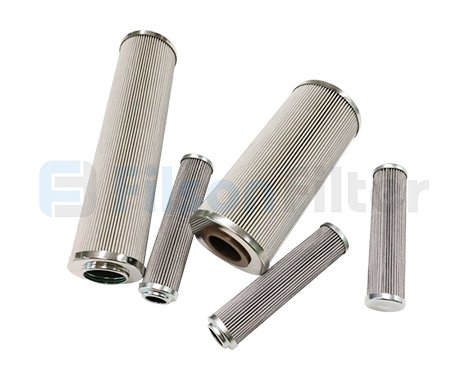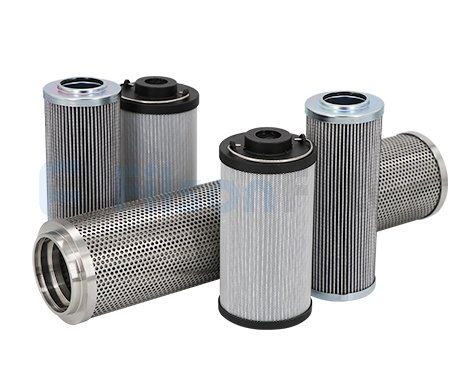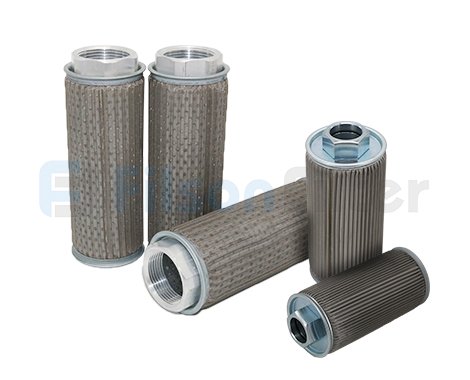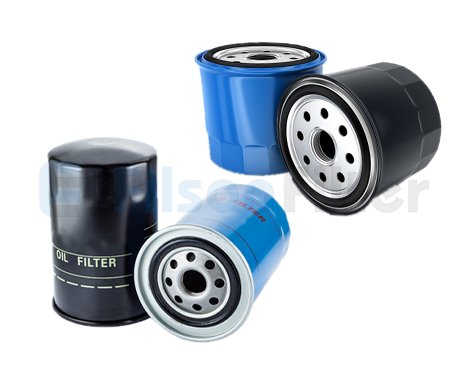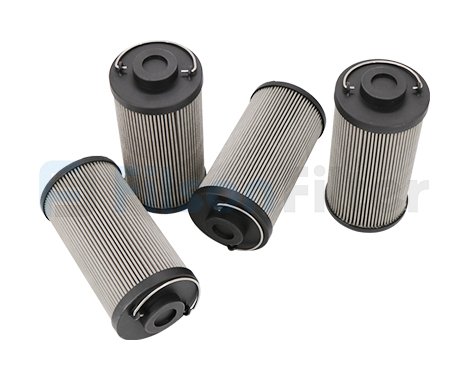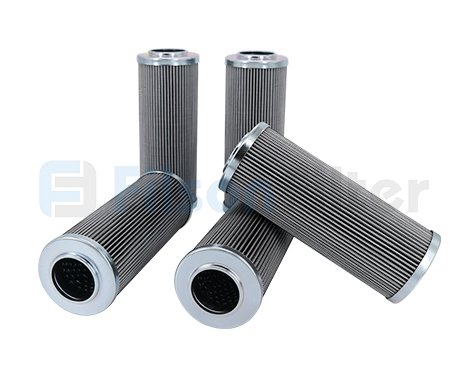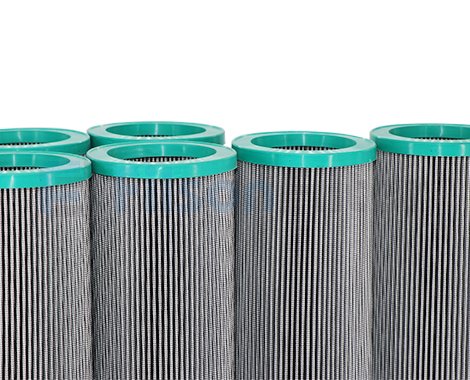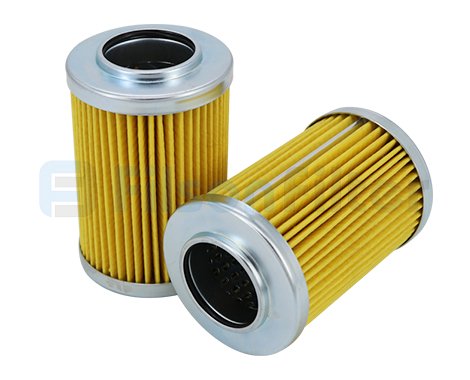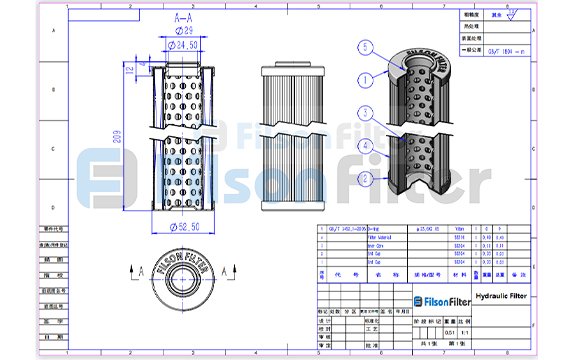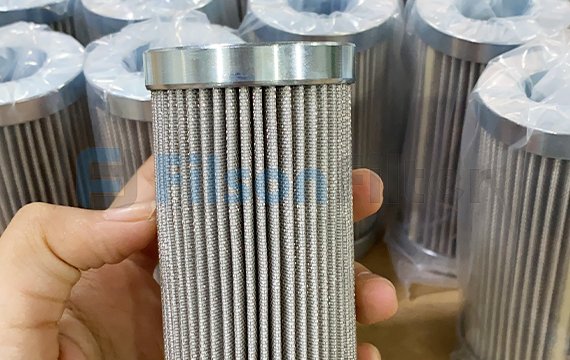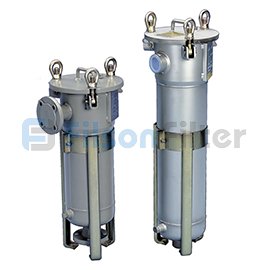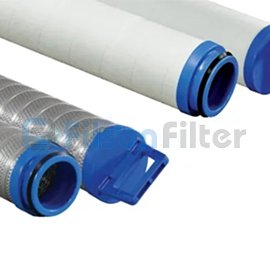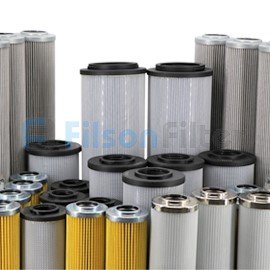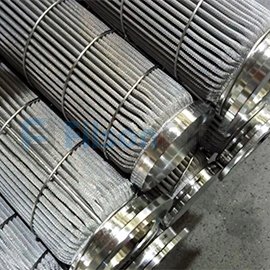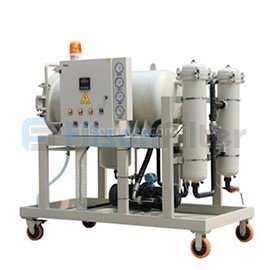Delivering Cleaner Oil For Your Hydraulic System
Filson is specialize in offering comprehensive hydraulic filter elements solutions serving for your applications.
- Protect critical engine components
- Available in varying models
- Full in stock, ready to ship
- Guaranteed competitive price
- In accordance with ISO and CE standards
What is Hydraulic Filter Element?
Hydraulic filter element, also called hydraulic oil filter, is a component built into its filter housing in order to remove harmful particles from fluids. It is able to reduce the contaminants to the desired value and then to maintain this level during the entire system operating time.
Hydraulic filter element is the core of hydraulic filtration system which performs the actual filtration and dewatering function in the filter housing. It has huge dirt holding capacity and large hydraulic fluids flow.
Filson CE certified Hydraulic filter element helps protect downstream critical components from damage. This avoids unscheduled downtime, reduces maintenance costs and prolongs equipment service life.
Send us your drawing and specifications, we will immediately offer hydraulic filter element quotes for you.
Hydraulic Filter Element Categories
Filson high pressure hydraulic filter elements are used to remove contaminants in the hydraulic system, protecting critical engine components from damage. They are suitable for heavy-duty applications with pressure upto 700bar.
Hydraulic return line filter element is perfect for return line filtering in heavy-duty applications. Its flow pattern from inside to outside means that the dirt is collected on the inside of the cartridges without painstakingly cleaning the filter housing.
The rigid structure of Filson in line hydraulic filter element allows for long term of use. It is integrated into a hydraulic system and installed on the return line before the pumps, valves and cylinders to clean contaminated hydraulic fluids.
Hydraulic suction oil filter, also named hydraulic suction strainer, is used to eliminate unwanted particles from hydraulic oil. It features small volume, light weight and excellent fluid compatibility. It is available in 5-10 inch or customized length.
Filson spin on hydraulic oil filter is used to protect pumps, valves or the entire hydraulic circuit from contamination. It has the advantage of convenient sewage discharge, easy installation and competitive overall cost.
Hydraulic Filter Element Types by Accuracy (4)

To enlarge filtration area and ensure normal operation, hydraulic filter element, with pleated structure, is carefully engineered to remove contaminants.

We utilize high-quality glass fiber (imported), stainless steel to construct hydraulic filter elements. This makes robust structure allowing for long term of use.

Filson hydraulic filter element is optimized to achieve maximum flow rate and optimal filtration efficiency at low pressure differential.

Whether your application involves harsh environments such as high pressure, hydraulic filter elements is vital to ensure your system is protected.
What is the Function of a Hydraulic Filter Element?
To reduce tear and wear of hydraulic system caused by machine part abrasion, Filson designs and manufactures hydraulic filter elements to remove contaminants such as metal powder, dirt particles, unwanted chemicals in hydraulic system.
- Prevent contamination, remove very tiny particles, improve the performance of the entire system
- Reduce system or equipment downtime, decrease the cost of running hydraulic system
- Protect hydraulic systems components such as fittings, valves, pumps from contaminants that would otherwise cause damage
- Reduce frequency of systems maintenance and component replacement
- Ensures hydraulic system is safe and clean, prolong service life of components
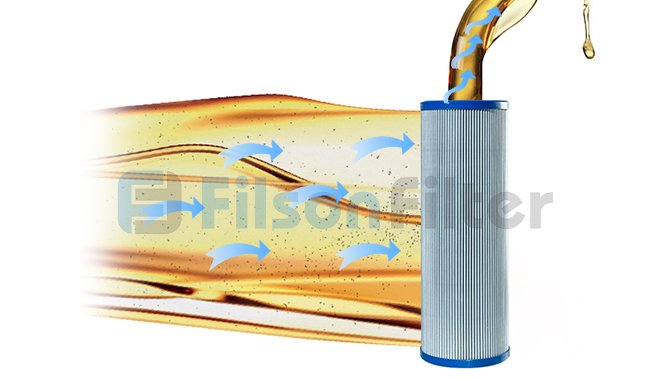
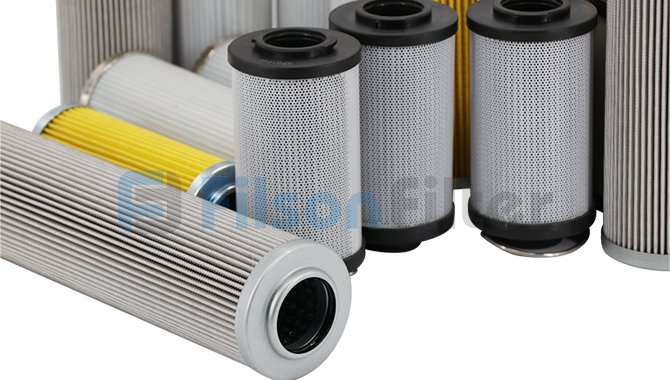
Construction Material of Hydraulic Filter Element
To meet different needs of our customers, Filson uses various materials to build hydraulic filter element. We can provide hydraulic filter element cross reference for famous brand.
- Micro-glass or glass fiber: high collapse pressure resistance, good water absorption properties, long service life
- Filter paper: cost-effective, large filtration area, improve performance of hydraulic liquid
- Stainless steel wire mesh: easy to clean and maintenance, long lifespan, remove large particles than 25 micron
Replacement Hydraulic Filter Element of Leading Brands
As one of the most reliable hydraulic filter element suppliers in China, Filson has the ability to fabricate amounts of replacement hydraulic filter elements as below:
- Pall hydraulic filter element
- Hydac hydraulic element
- Parker hydraulic filter element
- Rexroth hydraulic filter element
- Vickers hydraulic filter element
- Mahle hydraulic filter element
- MP filtri filter element
- Schroeder hydraulic filter element
- Eaton hydraulic filter element
- Donaldson hydraulic filter elements
- Epe hydraulic filter element
- Argo-hytos oil filter element
- Lenz hydraulic filter element
In addition, we can custom your hydraulic filter element as well as lube oil filter at your request.
Why Choose Filson Hydraulic Filter Element?
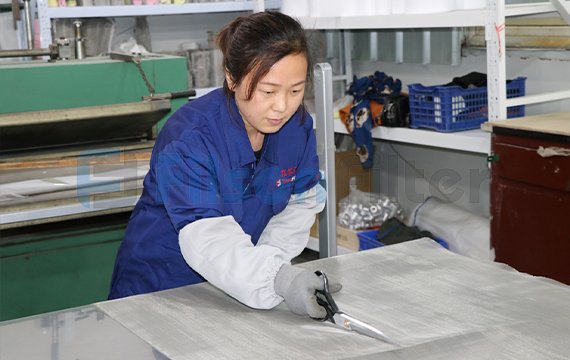
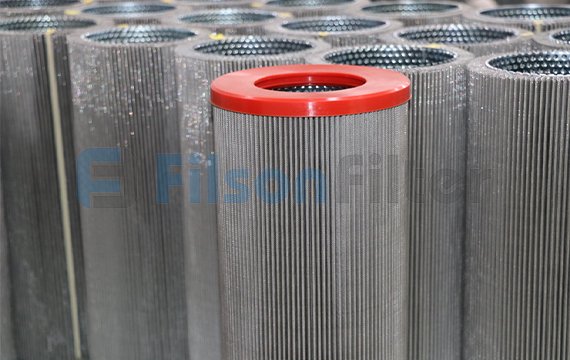
Filson is one of the best hydraulic filter elements manufacturers in China, our products have been exported to over 40 countries and regions with well received. We can offer complete hydraulic filter elements including suction filter, return line filter, in line filter, spin on filter and so on.
Filson is committed to provide customers with high quality hydraulic filter elements as well as competitive prices. Our filter elements comply with ISO standards and CE standards.
We can offer one-stop solution on hydraulic filter element fabrication with MOQ-10PCs. If you are interested in Filson hydraulic filter element, please feel free to contact us. We will immediately reply you.
Phone: +86-157 3695 8886
Email: sales@filsonfilters.com
- Construction material: glass fiber, stainless steel wire mesh, paper
- Dimension: at your request
- Filtration accuracy: 1-200 micron
- Filtration accuracy: 99.99% of 5 micron particles
- Working temperature: -30℃ to 110℃
- Working pressure range: 10 bar-700 bar
- Seal type: nitrile, Viton, Buna-N, NBR or at your request
- Power generation
- Hydraulic or lubricating system
- Agriculture and construction
- Chemical processing
- Oil and gas industry
- Compressors, diesel fuel equipment
- Coatings & Inks
Hydraulic Filter Element: The Ultimate Guide
At times, finding the best hydraulic filter element can an overwhelming task.
Why?
Because finding the right information about function, material type, specifications, working principle or classification can be so difficult.
The good news:
Today’s guide covers every detail about hydraulic filter elements – from basics to advanced aspects.
It has a wealth of knowledge that will help you get the right filter element.
Do you want to be an expert?
Well, let’s get to it…

Hydraulic filter element
In a hydraulic system, more than one million minute particles enter the system.
The particles are larger than one micron.
Usually 0.001 mm and can lead to extensive damage on the system.
Therefore, you should have a mechanism in place to clean the fluid.
A reason why you need a hydraulic filter element.
Now, what is a filter element?
Let’s dive right in…

Hydraulic filter – Photo courtesy: Machinery and Lubrication
Filter element removes or filters contaminants in fluid.
They come in different shapes and designs.
Standard filter elements have several pleated support and filtration layers.
Therefore, a hydraulic filter element is a device, designed to remove contaminants in fluids.
In most cases, these contaminants come from:
i. Ingestion through the reservoirs of the components of the system
ii. Internal generation of the particles from the hydraulic system components such as pumps and motors.
You can measure the performance of the hydraulic filter element by looking at the efficiency of contamination removal.
As a rule of thumb, a good filter element should have high dirt holding capacity.
And, depending on the design of your system, a single hydraulic filter can perform more than one task.

Different sizes of hydraulic filters
Take for example:
You can install pressure hydraulic filter elements between actuators and pumps.
Similarly, a return line hydraulic filters or lows pressure hydraulic filter elements are between actuator and tank.
Low-pressure filter will operate at a maximum pressure of 10 bars.
You can use the suction filter to eliminate coarse objects.
Then, the return line filter for fine filtrations.
Some of the low-pressure hydraulic filter elements you can use are:
i. Spin-on hydraulic filters
ii. Return line hydraulic filters
iii. Suction hydraulic filters
High-pressure hydraulic filters or heavy-duty filters are important for heavy operations.
They are fit for demanding operations or applications under extremely tight conditions and operations.
Flow rate of the hydraulic fluid through this system is very high.
And, of course, low to medium hydraulic pressure.
Some of the heavy-duty hydraulic filter elements include:
i. Duplex hydraulic filters
ii. Medium pressure hydraulic filters
iii. Low-pressure hydraulic filters
Standard pressure filters are also very common in the hydraulic systems.
They offer protection of the same magnitude.
The standard pressure filters include:
i. High-pressure hydraulic filters
ii. Medium pressure hydraulic filters
iii. Low-pressure hydraulic filters

Hydraulic system
Proper hydraulic filtration begins from making the right selection for the filter element.
The manufacturers’ specifications for hydraulic filter element depends on:
i. Type of hydraulic fluid
ii. Operating pressure
iii. Flow rate
iv. Possible restrictions
v. Expectations on the service interval
vi. Cleanliness level that the equipment will require
Tear and wear in the hydraulic system is due to the contaminants in the hydraulic fluids.
They range from pieces of metal, dirt particles, unwanted chemicals, etc.
https://youtu.be/2v8EJHkUYgQ
Here are some of the main reasons for installing hydraulic filter element:
· Reduce system/equipment downtime
Contaminants cause partial or total failure of hydraulic systems.

Section of hydraulic system
Obviously, system downtime will lead to low productivity. And, this will be costly.
· Prevent contamination
Hydraulic filter element traps all contaminants.
As a result, the contaminant cannot reach the hydraulic system.

Hydraulic filter element
Of course, this will improve the performance of the entire system.
· Improves safety
By installing a suitable filter element, your machine will function properly.
Consequently, you will improve safety in work place.

Machine safety – Photo courtesy: Machine safety blog
Of course, this will also guarantee the safety of the machine.
· Improves the life of components
Contaminants cause system tear and wear.
They damage components and reduce lifespan of machines.

Clean lubrication oil on gears
Installing filter element ensures only clean fluid enters the system.
The best part?
It will improve life span of machine parts and components.
· Increases operating profitability (reduces maintenance cost)
By the way, all the above functions have one aim – increase operating profitability.
In short, if you reduce system breakdown, contamination, safety and component life, you will increase profitability.

Filters configuration- Source: Hydraulics and Pneumatics
Hydraulic filter element is an assembly of different parts and components.
Look at this:
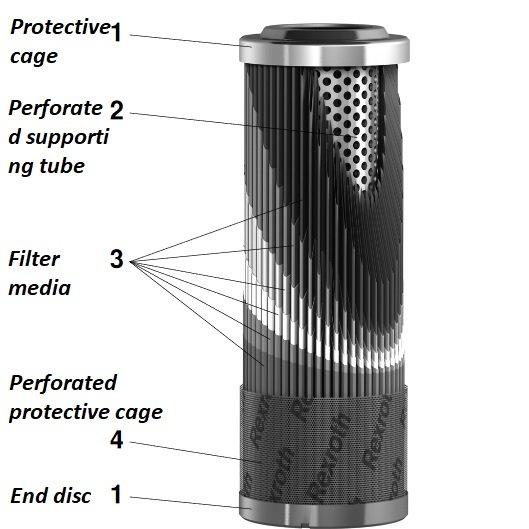
Parts of hydraulic filter element – Photo courtesy: Rexroth
Generally, the design or number of components of hydraulic filter element will vary from one model to another.
Anyway, let’s look at some of the main components of hydraulic filter element:
a) Filter Media
It’s the filter media that blocks contaminants.
You can find filter media made from different materials depending on specific applications.
Some of the most hydraulic filter element media include:
i. Paper
ii. Micro glass
iii. Stainless steel wire mesh
· Paper filter media
Quite frankly, paper is one of the most common filter media.
However, it has low dirt holding capacity, thus not very efficient.
The best part?
Paper is a good water absorber.
So, first, you can use it to remove water. Of course, that is an advantage.
It can also remove water from the hydraulic fluid, increasing the pressure drop and causing a clogging effect.
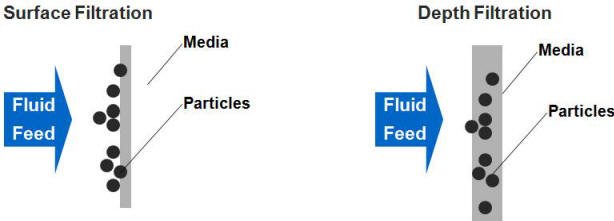
Filter media – Photo courtesy: FDPP
Again, it’s affordable and you can recycle it.
This paper can either be polyester fiber or just normal paper from the back of a tree.
A polyester fiber is also inexpensive.
Besides, it does not absorb a lot of water when you compare it to normal papers.
You can use the paper for:
- Deep filtration
- Nominal filtration
It is available in 10 millimicrons.
For some applications, you can try other hydraulic filter media.
That is the:
· Synthetic filter media.
Currently, synthetic filter media is the gold standard in industry.
It is made of synthetic glass fibers which are consistent and fine in texture.
You can use as many layers as possible.
Such filters are efficient with high dirt holding capacity.
Unfortunately, fiberglass particles may clog orifices.
This is a common phenomenon for low quality hydraulic filter element with synthetic media.
Other features of micro grass filtration media include:
i. Deep filtration of the hydraulic fluids
ii. Absolute filtration of the hydraulic fluids
iii. It has one of the best micron ratings improving the dirt holding capacity
iv. You can use it for mineral oils and emulsions
v. You can also get various or different grades of filter fineness
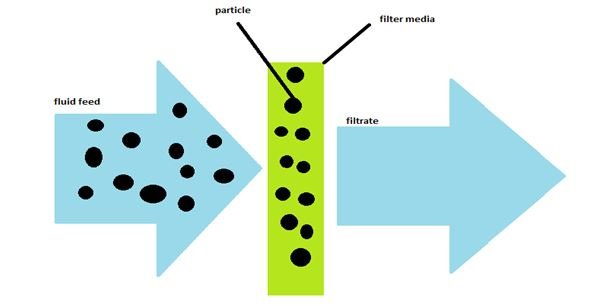
How hydraulic filter element media works
· Stainless steel filter media
Stainless steel wire mesh is also a popular material in hydraulic filter media.
This is a type of metal screen with stainless or standard steel.
It is woven to make a mesh with different pore sizes.
With stainless steel filter, you can wash or clean it several times.
However, the construction technique and construction do not allow for fine pore sizes.
It is also resistant to corrosion.
This limits the possibilities of contaminating the hydraulic fluids.
You can also use the stainless steel filtration media in extreme conditions such as high temperature and pressure.
Other key features that make it a valuable media include:
i. Surface filtration and nominal filtration
ii. It is a filter element that provides very high resistance despite the hydraulic fluid in use.
To choose a suitable filter media, you should have a good contamination control plan.
Know the application before choosing a filter media.
b) Supporting tube
It holds or supports the filter media either from inside or outside.
In many cases, the supporting tube is stainless steel.
Basically, it should support the weight of the filter media.
Of course the tube should withstand high pressure and fluctuating temperature.
A supporting tube is often porous.
It allows flow of hydraulic fluids from the filtration media.
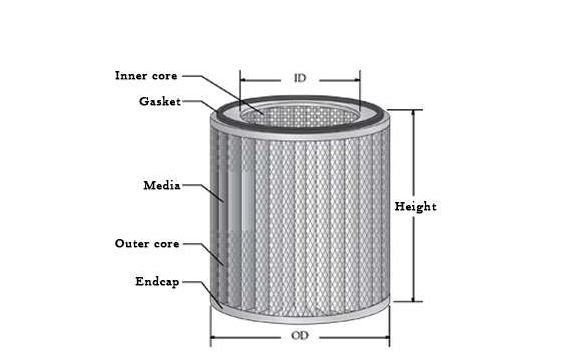
Parts of hydraulic filter element – Photo courtesy: SNIFT FILTER
The pore size of the supporting tube is wider to let the fluid flow faster into the hydraulic system.
It is corrosion free and you can easily clean.
Besides, you can reuse it for further filtration of the contaminants.
Basically this is the skeleton of the hydraulic filter element.
It holds and supports the whole weight of the device.
The small pores of the filter media usually take care of the filtration.
However, it does not assist in blocking any contaminants.
c) Sealing material
A sealing material forms a hard coat on a porous surface.
It might be in the form of paint, varnish, or rubber seals depending on the type of application.
It prevents the content passing through the hydraulic filter from spilling over into the wrong places.
Sealing material guides hydraulic fluid into the right places instead of letting it spill over.
There are different types of sealing materials you can use in a hydraulic filter element.
In many cases, the seal is permanent however others are replaceable.
You can make a sealing material that will fit your unique application requirement.
Multifunctional filters allow you to seal and filter at the same time.
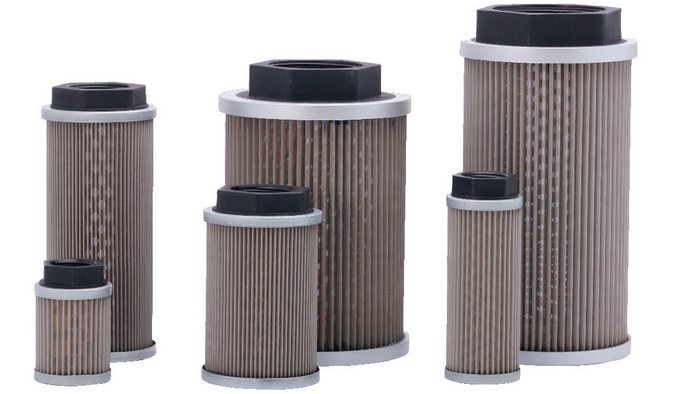
Different sizes of hydraulic filter element
Some of the most common material for sealing material include:
- Plastic
- Polyester
- Nylon
- Dacron
- Stainless steel
You should consider the following when choosing sealing material:
i. Filtration requirements of the application
ii. Chemical compatibility of the material with the type of hydraulic fluid
iii. Resistance of the material to corrosion from corrosive agents
iv. Resistance of the material to breaking or bursting (burst strength of the sealing material)
v. Flexibility of the fabric you choose
vi. Tensile strength of the material to withstand the mounting temperature and pressure
vii. Outgassing behavior of the material
viii. Radiation resistance of the material
d) Protective cage
It is an outer section of the hydraulic filter media.
Normally, the cage protects integral parts of the hydraulic filter element from damage.
Remember, the protective cage is porous.
So, it allows the admission of hydraulic fluids as it flows through the hydraulic filter element.
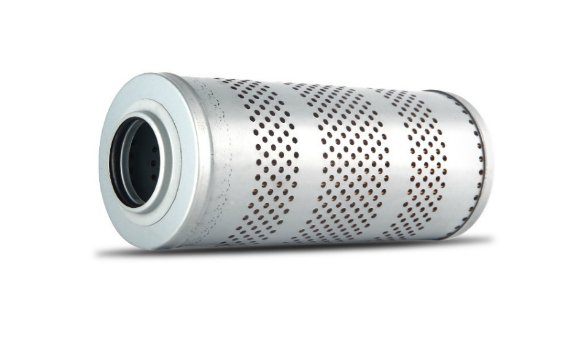
Stainless steel protective cage
In other words, you can also refer to the protective cage as the filter housing.
The protective cages are available in different shapes, materials, and sizes.
They can fit the hydraulic filter element.
You should choose the right type of protective cage for your hydraulic filter element.
This will depend on the application.
e) End discs
The end discs in a hydraulic filter element are available in different forms and shapes.
It will depend on the specific applications.
Here, the end discs can also assist in the process of filtration.
Remember, others have pores to allow for fluid flow.
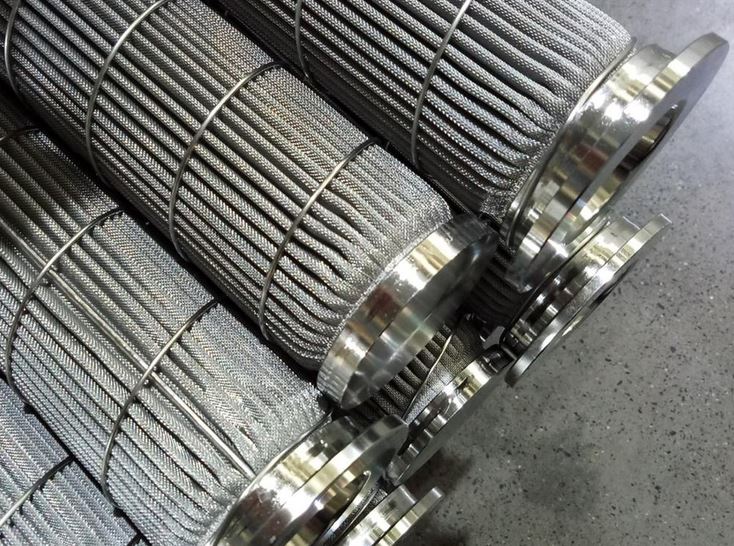
Stainless steel end disc
They stop flow of the hydraulic fluid from the filter element.
How fluid flows within the hydraulic filter element will depend on the design configuration.
The principle involves fluid flowing into and out of the hydraulic filter element.
Of course, the fluid that enters the hydraulic filter element is contaminated.
However, fluid leaving the filter element is free from any form of contaminants.
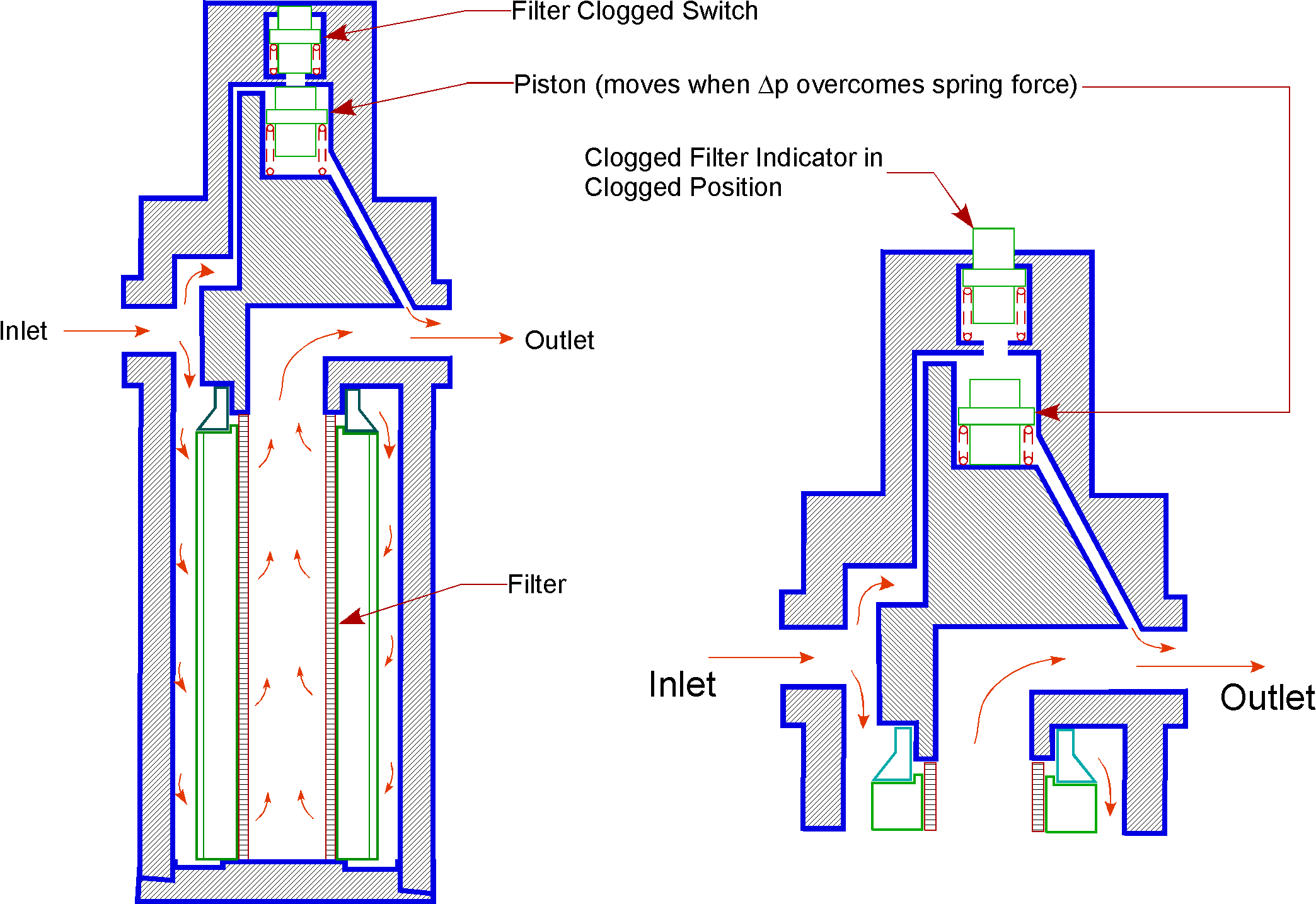
Hydraulic filter – Photo courtesy global spec
Modern filter element in hydraulic filter system have advanced features.
For instance, you can easily tell when there is a hydraulic filter element in the system.
Or, even tell when the hydraulic filter element needs replacement.
No, what happens in the filter element?
As fluid flows through the filter element, contaminants (dirt deposits) are trapped by the media.
At the same time, the fluid will develop a differential pressure (between the inlet and outlet).
Hydraulic filter system has a bypass piston.
There is a spring that holds it in position and senses the difference in pressure.
Once the differential pressure reaches a specific threshold, indicator switched on.
It indicated the hydraulic filter element requires cleaning or replacement.
As you have seen in the structure of the hydraulic filter element, it has two component adhesives.
They vertically seal the filter elements.
Similarly, the perforated protective cage around the filter mat, are all connected to the two end discs.
Protective cage will allow the fluid to flow continuously and freely in the hydraulic filter element.
As the fluid flows through the mat, the protective cage will offer protection from any form of external damage.
Profile seals or seal rings will seal the space between the filter housing and the filter element.
They will help in reducing or stopping any form of leakage that may occur from the hydraulic filter element.
As fluid continues to flow, more contaminants remain in the hydraulic filter element.
Finally, the clean hydraulic fluid will then flow out through the outlet into the hydraulic system.
Note:
Most hydraulic filter elements are zinc free and this helps in preventing zinc soap formation.
Apart from that, zinc free equipment is best for highly biodegradable hydraulic oils.
It prevents early blocking of the elements and increases service lifespan of hydraulic filter element.
This makes the zinc-free hydraulic filter elements universally acceptable in most applications.
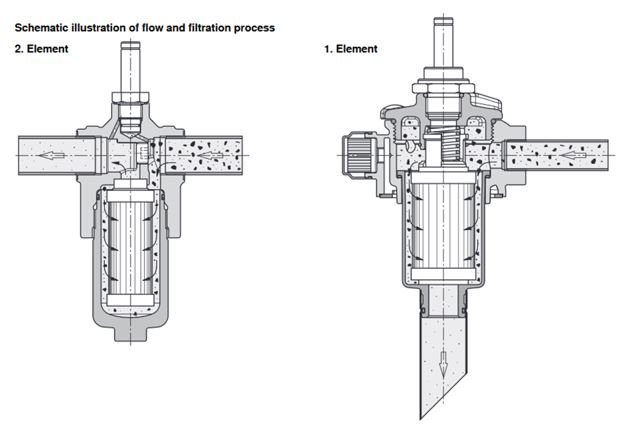
Working of hydraulic filter element – Photo courtesy: Rexroth
Do you wish to invest in a hydraulic filter element?
Well, here are 11 critical aspects you must consider:
· Material
Depending on your budget and application, you can choose from fiberglass/ micro glass, paper or stainless steel.
· Fiberglass/ Micro glass
It is one of the best materials for hydraulic filter element.
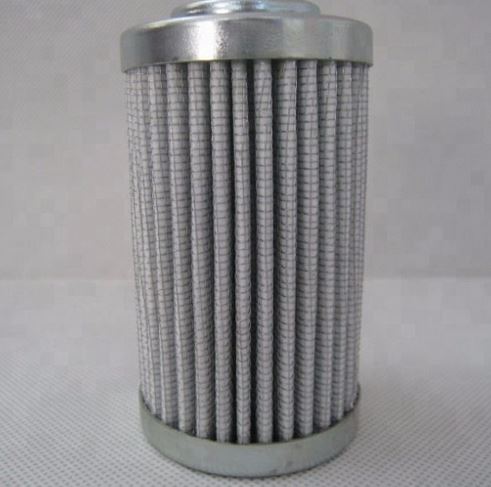
Fiberglass filter element
Fiberglass filter element can eliminate minute particles from fluids.
It is more durable than paper.
Also, you can also use it in gas filtration.
The best part?
They have uniform pores.
At times, manufacturer may choose a co-pleat material.
You are likely to find hydraulic filters having co-pleats with other types of materials such as:
i. Polymer mesh
ii. Stainless steel wire clothes
iii. Annealed epoxy-coated steel wire
· Stainless steel
Such filter element feature wire cloth and they are corrosion resistant.
The stainless steel cloth has weaves of various patterns.
This forms a nominal and absolute filter ratings.
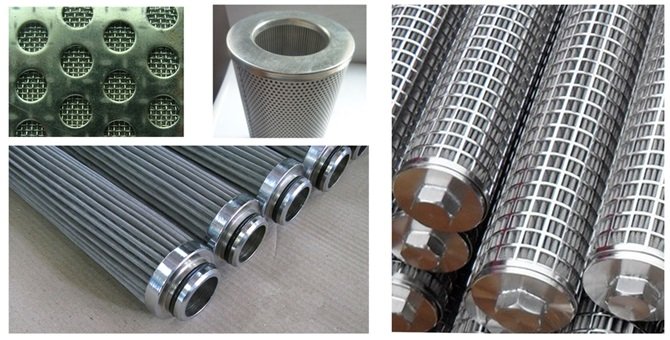
Stainless steel hydraulic filter element
Some of the most popular construction methods include:
i. Epoxy-bonded construction method
ii. Crimped construction method, especially for industrial hydraulic filter elements
iii. All welded construction method for application of very high pressure and temperature
Remember, you can easily clean the stainless steel hydraulic filter element.
You can use non-abrasive cleaning techniques such as ultrasonic and backflushing.
Besides, you can use stainless steel filter in most hostile environments.
A good example is the hazardous fluid filtration.
It will save you on the disposal cost and downtime.
· Paper
Paper is suitable for disposable hydraulic filter element.
Furthermore, paper filter element is also weak and cannot remove some micro contaminants.
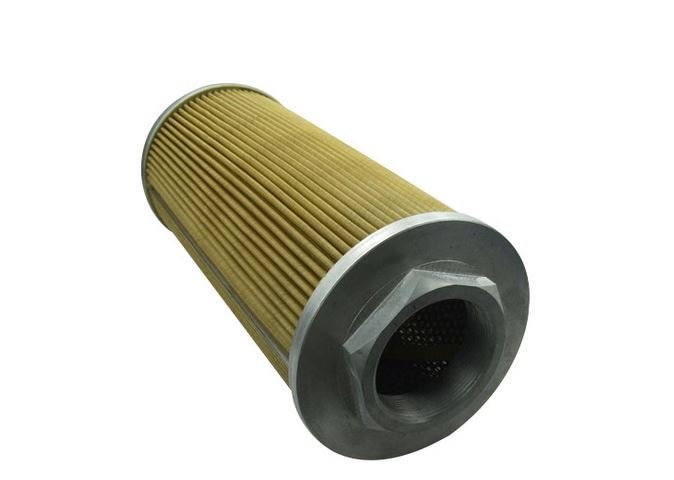
Paper hydraulic filter element
Paper is cheap material thou good in absorbing water in hydraulic fluid.
Manufacturers use polytetrafluoroethylene (PTFE) or polyester fiber in making the hydraulic filter paper.
Also, the pore size and thickness vary depending on the application.
· Filter medium material (activated carbon)
Activated carbon is seen as a miraculous filter medium material.
This is due to its ability to remove certain contaminants.
They are tiny carbon pieces in block or granular form.
These filters are extremely porous due to certain treatments.
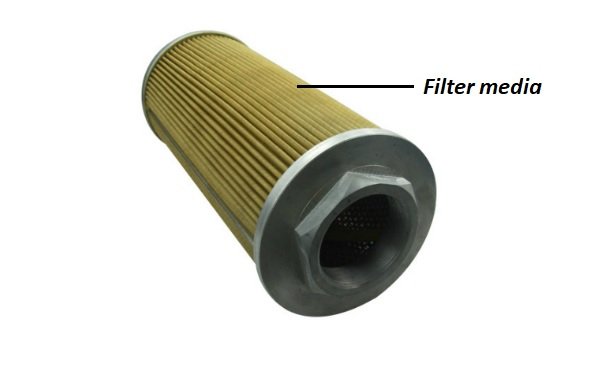
Hydraulic filter media
One gram of the activated carbon has a wide surface area of about 500 to 3000 square meters.
Using four grams off the activated carbon is equal to a person using the surface area of a football field.
The massive and wide surface area will allow active carbon to have better efficacy in absorbing contaminants.
Besides, they are capable of removing different types of contaminants depending on the type of application.
Activated carbon filters are available in different ranges from 50 microns to around 0.5 microns.
Smaller pores of activated carbon guarantee effectiveness.
Note that small pores also reduce the rate of flow in hydraulic fluids.
As the hydraulic fluids flow through the activated carbon, the contaminants such as chemicals stick to the carbon.
Both temperature and flow rate determine the effectiveness of the filtration process.
To get the best results, you should use hydraulic fluids of low temperature, flowing at low pressure.
Activated carbon is a product of coal, wood or coconut shells.
You will find them in the market as carbon blocks or granular activated carbon.
It actively removes certain types of “stubborn” contaminants.
Activated carbon filter elements can remove:
i. Dissolved solids that include salts, minerals, and metals
ii. Most of the microbial contaminants in the hydraulic fluid
iii. Inorganic contaminants including lead
iv. Radionuclides even though it reduces the concentration
However, activated carbon can only last a short period of time.
Therefore, you need to check it every week.
· Hydraulic filter element dimensions
You should consider the diameter, length, and weight of the filter element.
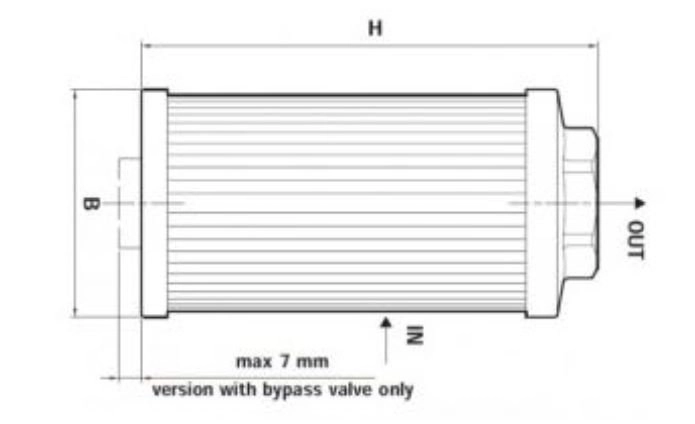
Hydraulic filter elements dimensions – Photo courtesy: Parker
Just ensure you’re choosing the right size that suit your unique hydraulic system.
Of course, this goes alongside the filtration surface area.
For example, wide surface area increase time filter element takes to remove contaminants.
· End caps
It is the end fitting of the hydraulic filter element.
They act as the seal between the housing and the filter.
The end cap should fit the connector to prevent possible leakage.
Remember, end caps come in different sizes, dimensions and material.
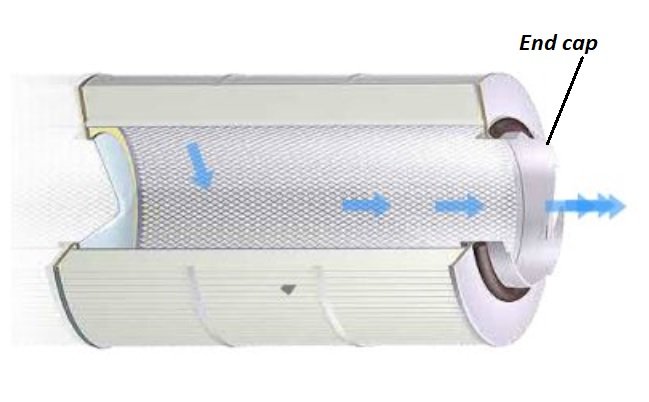
Hydraulic filter end cap
For instance, you may have double open ended end caps.
Of course, the plugin or on end caps are also available.
Other types of end caps which fall under the general classifications are:
i. Flat end caps such as code 2 twin seals and code 3 twin seals
ii. GR fitting
iii. Fin end caps such as code 7 twin, code 8 twin, and an end cup.
· Maximum Operating Pressure
You must consider maximum operating pressure when buying hydraulic filter element.
Obviously, this will depend on the type and nature of the application.
Through the maximum pressure, you will know:
i. Type of material i.e. high pressure will need very strong materials for the structure.
ii. Dimensions of the hydraulic filter element
iii. Type of media that can withstand pressure or flow of hydraulic fluid
iv. Type of seal that will ensure “zero leakage” even at high pressure
· Maximum flow rate
Here, the maximum flow rate will depend on the type of application.
For high flow rates, you need filter element that can cope with the speed and pressure.
Also, pore size of the hydraulic filter element also determines flow rate.
In case you are interested in a higher rate of flow, get a hydraulic filter element with wider pores.
As a rule of thumb, higher flow rate implies faster filtration.
It’s this simple – get a hydraulic filter element that can withstand a specified flow rate.
· Filtration size
Size of pores of filter media determines size of contaminants it can remove.
So, you must understand the environment where you intent to use the hydraulic filter element.
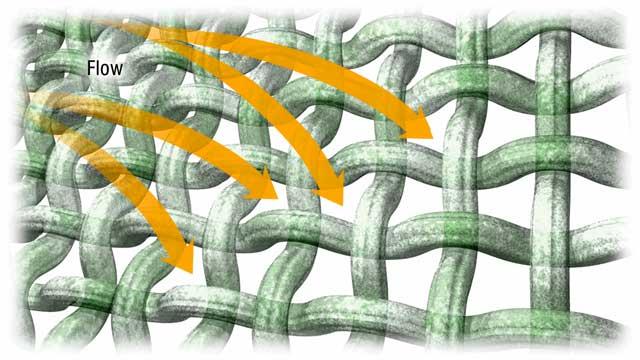
Hydraulic filtration – Photo courtesy: Machinery and Lubrication
Remember, the type of contaminants that might be in the hydraulic fluid will determine your choice for filtration media.
Take for instance:
i. Contaminants with small size will require a small pore size of filter element.
ii. Small pore size may slow the rate of flow
· Construction type
Again here, you will choose a construction type depending on your unique application requirement.
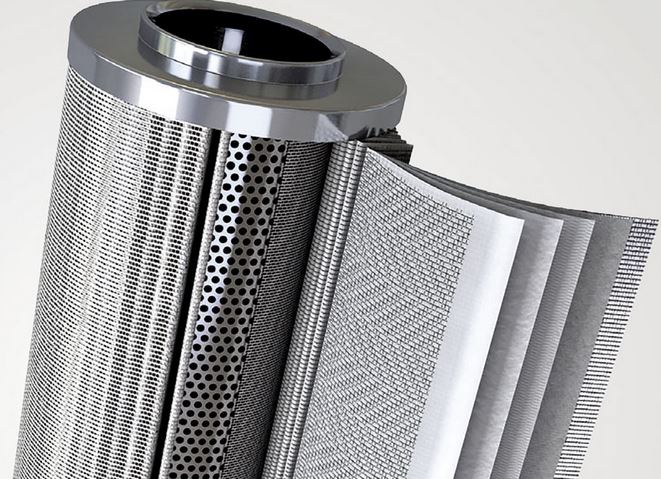
Hydraulic filter element construction
Hostile environments will require hydraulic filter element with robust construction.
Some of the construction types available include:
i. Epoxy-bonded construction type
ii. Crimped construction type particularly for industrial hydraulic filter elements
iii. All welded construction type for application of very high pressure and temperature
· Micron Size
Micron size of the hydraulic filter element will depend on the type of filter media you choose.
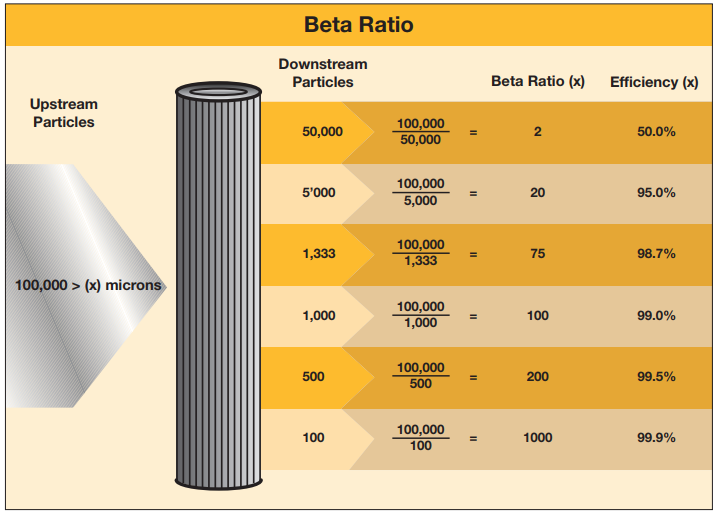
Micron rating and efficiency of hydraulic filter element
It will also rely on the information about the hydraulic fluid that you intend to clean.
Different types of media have varying micron sizes or ratings.
There are certain types of media that cannot exceed a particular micron size.
Depending on the hydraulic fluid you intend to filter, choose a media that will filter all contaminants.
It means that the media will have a particular micron size.
One that can handle the contaminants in the hydraulic fluid.
· Contamination retention
Contamination retention of the hydraulic filter element will also depend on the type of filter media.
A good filter media should retain contaminants for a long time without being obsolete.
Longer contaminants retention time is better.
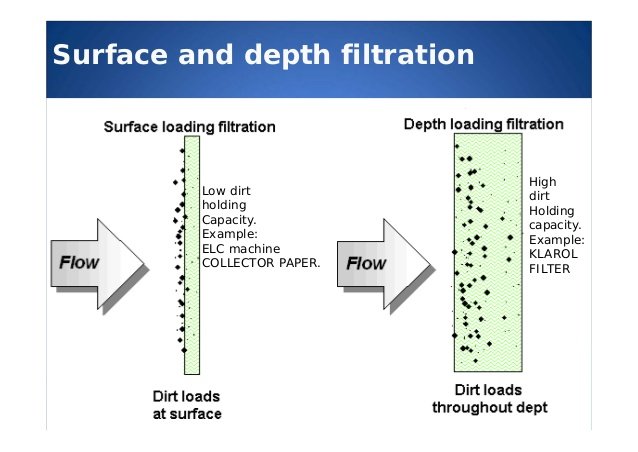
Dirt holding capacity of hydraulic filter element
After a certain period of retaining the contaminants, you need to check the hydraulic filter element.
It might clog with too many contaminants.
This will eventually reduce the efficacy of the device.
Depending on the type of media, you can decide to replace or clean.
There are certain types of media that have very low contamination retention.
For such, check their filtration status more often.
In short, before buying hydraulic filter element, know it contamination retention.
· Differential pressure
It is the pressure relative to inlet and outlet of filter element.
You can use it to know whether the filter element is clogged or not.
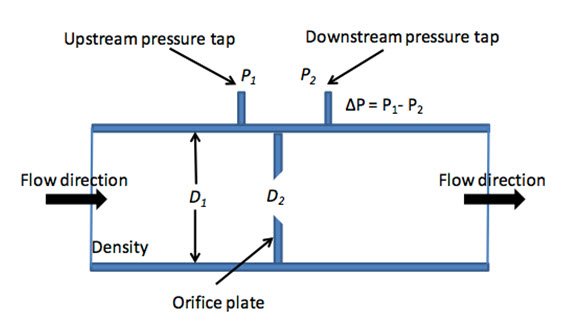
Differential pressure
· Filtration quotient βx(c) (β value)
Filtration quotient or the beta value of the hydraulic filter element determines the efficiency.
Here is exactly what I am talking about:
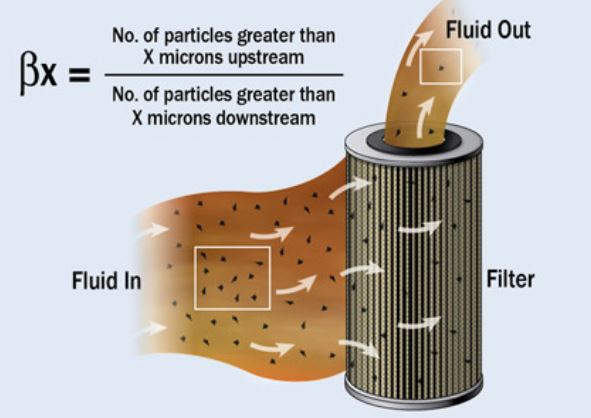
Beta quotient – Photo courtesy: Machinery and lubrication
The efficiency of the hydraulic filter element will depend on the type of filtration media.
Of course, we had discussed how to achieve maximum efficiency in earlier chapters.
This section will take you through a simple and effective way of cleaning hydraulic filter element.
Of course, you cannot clean the disposable types such as paper filter element.
What should you do?
Step 1: Remove the hydraulic filter element
Follow manufacturer’s instructions to carefully remove the element from its housing or assembly.
You must have appropriate tools/equipment and appropriate safety gear.
Step 2: Clean the hydraulic filter element
It is now time to clean the filter element.
However, to do this successfully, pay attention to the following:
i. Choose the right cleaning detergent or solution
ii. Adopt the best cleaning technology
iii. Have all safety gear in place
Now, how should you go about the process?
Deep the hydraulic filter element into a solvent tank.
The solvent will clean the filter element.
Then rinse the filter element to remove all the solvent.
After that, you can use brush to remove and dirt or debris that might be on the filter.
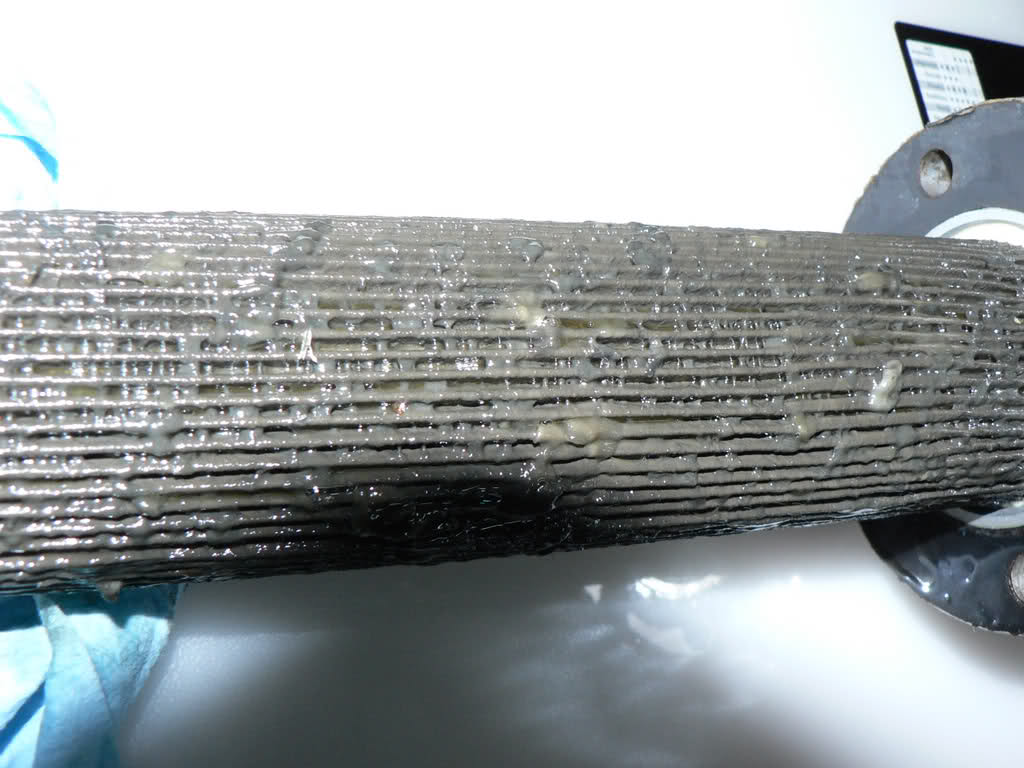
Dirty hydraulic filter
Remember, during the cleaning process, the solvent dissolves the dirt.
So, you must have enough of the cleaning solvent.
Go ahead to shake off any remaining solvent on the hydraulic filter element.
Then, pour the hydraulic fluid in the bucket and then place the filter in the hydraulic fluid.
Swish the hydraulic filter element in the bucket of hydraulic fluids for a while.
It will assist in removing the traces of solvent on the hydraulic filter element making sure it is solvent free.
After that, you remove the filter element from the bucket of hydraulic fluids and rinse it well.
Step 3: Replace the filter element
Now, this is the last step.
Replace the hydraulic filter element to its original position.
Using the necessary tools, return the hydraulic filter element and fix it properly.
You can go ahead to tests your system.
Due to wear and tear, at some point, you will replace hydraulic filter element.
But, can you go about the filter element replacement process successfully?
Let’s find out.
Hydraulic filter replacements are available in different types and forms to fit your applications.
Some of the most common types of the hydraulic filter element replacements are:
i. Axial and radial flowing elements
ii. Cordless and corded elements
iii. High and low-pressure elements
Of course, the flow may range:
i. From the outside moving inwards
ii. From the inside towards the outside
iii. From the top to the bottom
iv. From the bottom to the top
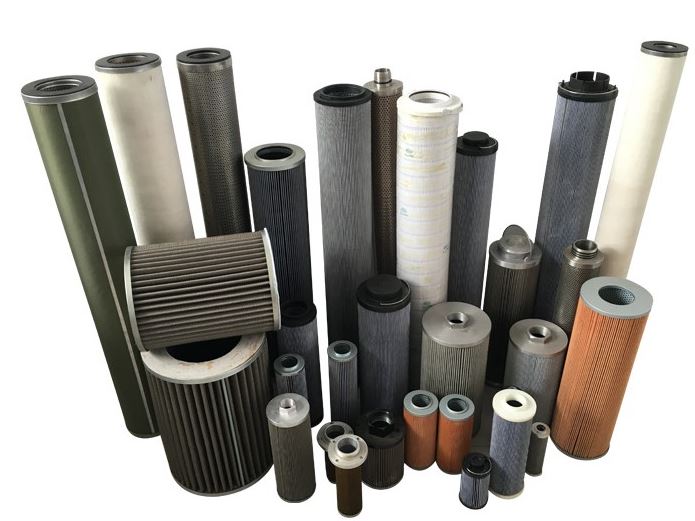
Different types of hydraulic filter replacement
A hydraulic filter element cross-reference is a list containing the filter make and the part number.
Anytime you want to replace a filter element, you need a cross-reference chart.
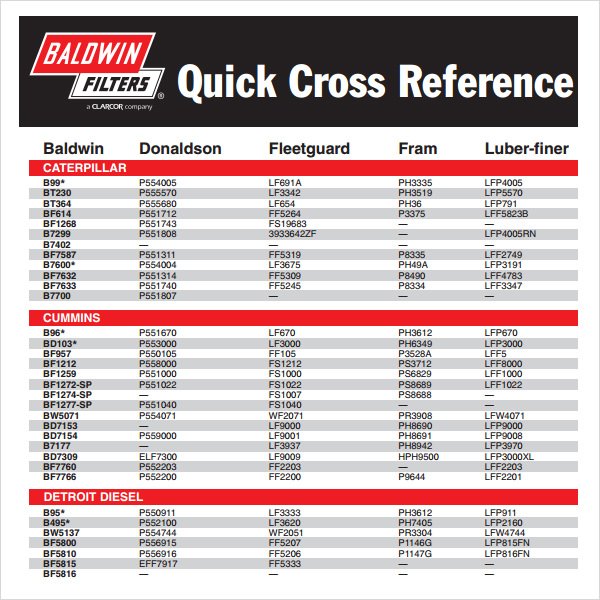
Cross-reference chart
It makes it very easy for you to identify the exact type of replacement that you need.
The process of replacing a hydraulic filter element begins with gathering the right tools for replacements.
Remember to get the right replacement for the obsolete hydraulic filter element to avoid any mistakes.
Shut down the whole hydraulic system and ensure it is not operational.
Reduce the pressure in the system to the lowest point to avoid outbursts when you remove the hydraulic filter element.
Use a piece of cloth and some fluid to clean around the head of hydraulic filter element.
This will assist in minimizing the infiltration of the contaminants while opening hydraulic filter element.
Purge and then drain the hydraulic filter element before opening and removing it.
Next, use appropriate tools to carefully remove the obsolete hydraulic filter element.
Ensure the fluid is not flowing in the system during the filter replacement process.
Place the obsolete hydraulic filter element on the table or lint cloth and clean the adjacent joints.
Make sure all joints of the new hydraulic filter element matches that of the equipment.
Inspect the O-rings or the lid, making sure it is defect free and it is ready for use.
You can attach the head of the filter body and make sure it fits well on the equipment.
After that, fix the new hydraulic filter element and tighten it to avoid any accidents in the future.
You can go ahead and bleed air from the system as you are going back online.
And by the way, do you know FilSon Filters provides the best hydraulic filter element replacement?
Well, you can get a cost competitive and high quality hydraulic filter replacement that meet the exact specifications as the original one.
With years of experience and expertise, FilSon hydraulic filter element will meet the unique application requirements for your application.
We give you a perfect and cost competitive solution to the expensive original filter elements.
You can contact us today for replacement hydraulic filter element.
If you’re wondering where to use hydraulic filter element – here are some of the most common applications.
1) Steel industry
This is one of the industries with the harshest and hostile conditions in comparison to any other manufacturing industry.
To ensure continuous production of steel and the safety of the people and equipment, the systems must be flawless.
One of the major systems in the steel industry is the hydraulic system which should be operational all the time.
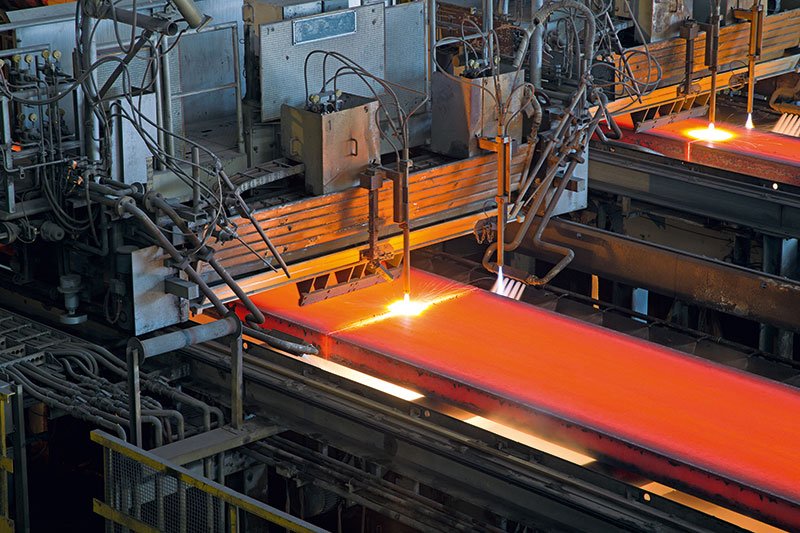
Steel manufacturing industry
Some of the hydraulic systems in the steel industry include the hydraulic pumps, hydraulic valves, hydraulic accumulators and hydraulic rams.
These hydraulic systems require clean hydraulic fluids to assist in daily operations.
The hydraulic filter element is the main type of filter that most steel industries use to clean the hydraulic fluids.
Oil is one of the hydraulic fluids that will require continuous filtration and maintenance in the steel industry.
The benefits of running a hydraulic system with clean oil are universally acceptable.
Hydraulic filter element blocks the contaminants in the oil ensuring efficiency and control at very low costs.
2) Marine industry
The marine industry is one of the biggest users of hydraulic systems in the world.
Most of the systems on ships and submarines depend on hydraulics to ensure smooth operations.
Some of the major hydraulic systems are the hydraulic pumps, hydraulic power units, hydraulic control blocks and motors among others.

Marine industry
Some of the major applications of the hydraulic system on a ship include operating machines for cargo operations.
It is also an important factor in the engine room, the safety of the shipboard and comfort of the crew members.
Furthermore, the precision and accuracy of the hydraulic system qualify it as a component in the maneuvering system of the ship.
Also, it has an effective hydraulic filtration system that ensures maximum production and peak performance of the hydraulic systems.
The hydraulic filter elements are very common and they ensure that the systems are clean and can function for long.
Apart from extending the longevity of the systems life, it is able to reduce downtime by reducing damages and saving money.
In the modern world, any meaningful operation at sea without the hydraulics is unthinkable.
Therefore, it is important to maintain hydraulic systems and clean the hydraulic fluids regularly.
The hydraulic filter elements offer excellent service in maintaining the marine hydraulic systems.
3) Power generation
Filtration is a key element in the system of generating power especially when it comes to the hydraulic system.
Heavy rotational equipment and turbine systems use the hydraulic and bearing oil applications.
The bearing oil applications include cooling and lubricating the moving parts allowing them to move freely.

Geothermal power generation
Control oil functions also need the oil to impact a particular form of mechanical stress for power generation.
Such processes have certain issues of degeneration of the hydraulic fluid which in this case is oil.
Oil becomes sticky and brown in color which may cause a great problem in the system in cooler temperatures.
It is important to avoid such problems in power generation equipment as it might block the systems.
Using the hydraulic filter element will assist in eliminating such issues in the hydraulic fluids.
Remember, it ensures that the oil that passes through the system is pure and free of contaminants that may damage the machines.
Hydraulic filter elements also help in the cleaning of other fluids such as bio-fuels and diesel.
It cleans the fluids during the production in the reservoir, and transport to particular areas of the system.
In the end, it will ensure that the power generation system is fully operational with very minimal interruptions and downtime.
4) Material handling
Material handling machines rotate quite often in daily activities as they pick and drop material in different places.
They are the beneficiaries of slewing gears in a circuit that uses hydraulic systems for their operations.
The rest of the machine will show optimum performance due to the small action on one of the hydraulic gear systems.
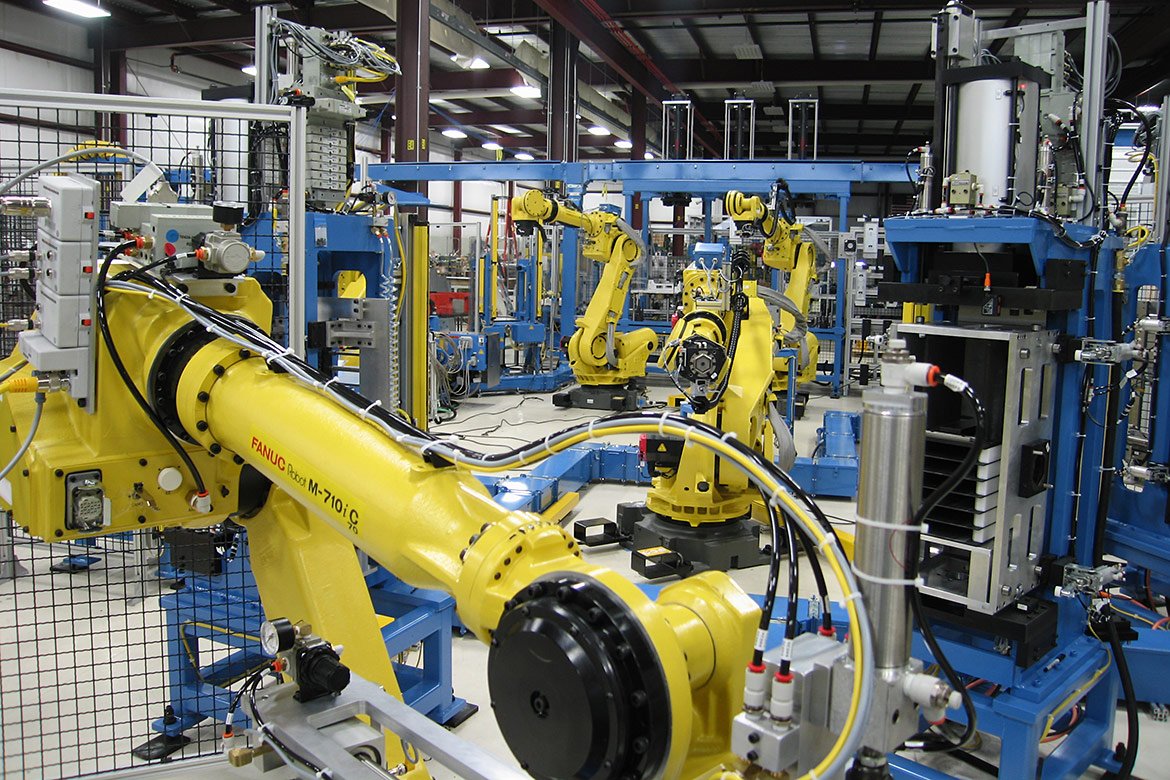
Material handling system
The configuration of the material handling machines uses displacement motors and displacement pumps with torque controls to operate efficiently.
It will combine the hydraulic characteristics with the torque control characteristics to enable the machine to work properly.
In this case, the two systems work together and none can operate in solitude without the other.
Such a system will require very particular and efficient systems with minimal hitches that would slow it down.
Efficient movement in the systems is possible because of clean and pure hydraulic fluids flowing in the system.
Also, the purity and cleanliness of the hydraulic fluid are as a result of the hydraulic filter elements that clean the hydraulic fluid.
Hydraulic filter element makes sure that the fluid that goes into the pump is also very clean and pure.
It will ensure handling machines are fully operational and reduce the high cost of maintenance.
5) Mining
In the mining industry, you can experience a lot of problems and difficulties in different situations.
The hydraulic systems in mining are one of the most specific inventions that the mining industry appreciates.

Mining industry
Some of the major hydraulic inventions in the mining industry include:
i. Submersible, heavy duty agitator pumps which depend on hydraulics with variable RPM
ii. Drag flow heavy-duty hydraulic pumps such as the hydraulic submersible agitator slurry pump
iii. Drag flow hydraulic power pack
iv. Excavators
Hydraulic systems, in this case, have hot and toxic hydraulic fluids under intense pressure.
Working on the mining grounds using the hydraulic system is also intense and dangerous.
It requires efficient systems with minimal interruptions during the process of mining.
Clean hydraulic fluids and mining equipment are one of the most important considerations in this case.
Hydraulic filter element is a key product that you can easily use in cleaning the hydraulic fluids in the system.
It makes sure that the fluid flowing through the hydraulic system is free of contamination enabling continuous operations.
6) Automotive
Automotive industry is a wide sector with quite a number of hydraulic systems driving the machines.
For instance, there are numerous applications of hydraulic systems in a car.
Hydraulic pump in your car boosts several components in the car to perform different functions.
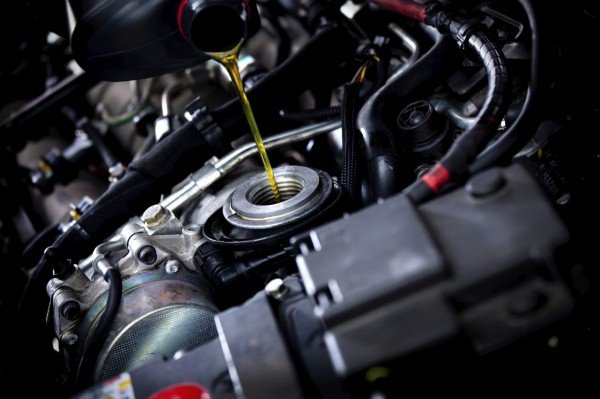
Automotive industry
In your car, the hydraulic pump will assist in stopping and steering the car, and support weight while providing smooth rides.
The performance of the hydraulic pumps on these systems are as follows:
· Hydraulic pumps in the brake system
Master brake cylinder of your car has the most significant hydraulic pump.
It will assist in pushing the brake fluids into the system to the brake calipers of the car.
It will, therefore, initiate the most significant pressure and force to engage the pads and stop the car.
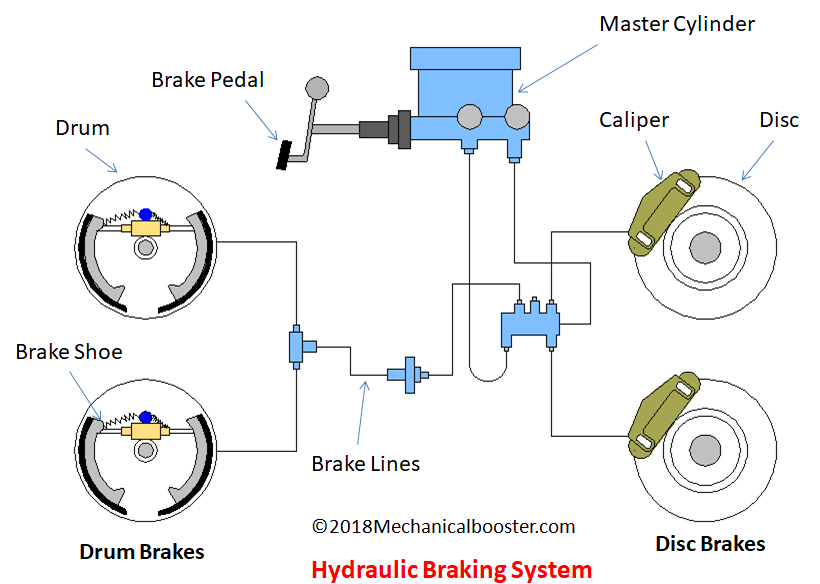
Hydraulic brake system
Modern cars require a lot of pressure to initiate the breaks and stop the car, especially at high speed.
The amount of force that should be in the brake system to stop the car at high speed is tremendous.
Hydraulic pumps will assist in the generation of this force and stop the car.
· Power steering hydraulic pumps
Turning an old build version of a vehicle at low speed is very difficult and you will need a lot of force.
Modern vehicles have the hydraulic pump in the system in the steering making it a power steering.
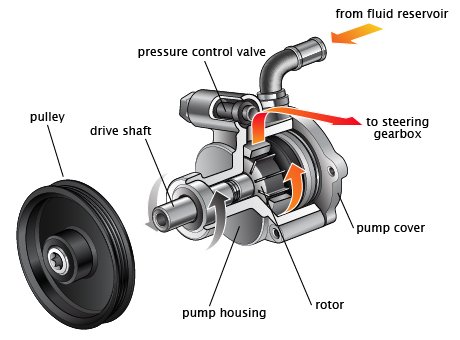
Power steering pump
It assists in turning the vehicle with very minimal energy even at low speed or when it is not moving.
Such applications in the car require an efficient filter to clean the hydraulic fluid.
The hydraulic filter element is the most reliable form of filter that ensures the hydraulic fluid is free of contaminants.
It makes the operations in an automotive very simple and efficient with an expenditure of very little energy.
7) Agriculture
Large scale modern agriculture is a practice that requires the use of machines such as tractors and plows.
The tractors assist in doing a lot of operations such as plowing, land reclamation, spraying pesticides among others.
Most of the agricultural applications rely on hydraulics to help in the machine operations.
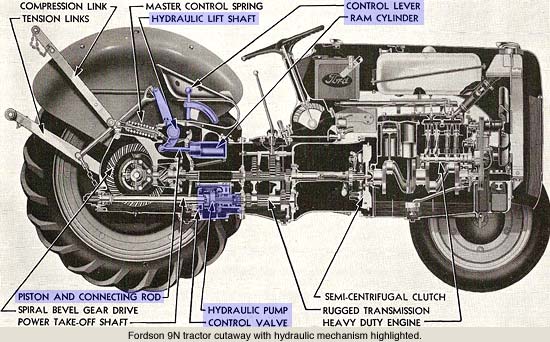
Tractor hydraulic system
The hydraulic systems in the tractors require a clean and efficient flow of the hydraulic fluids.
Also, it will ensure that the hydraulic system is free of contaminants that would destroy the equipment.
8) Food processing
The food processing industry is another important sector that relies on different types of machines.
These machines also rely on the hydraulic system to assist in providing the necessary power to operate.
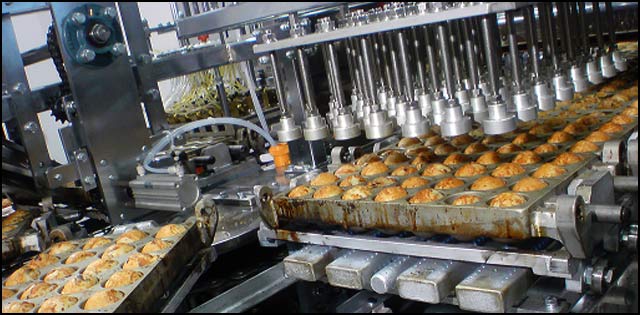
Food processing industry
Hydraulic systems are also dependent on clean hydraulic fluids to provide the necessary power.
To get the clean hydraulic fluids, there are hydraulic filter elements in the hydraulic systems to eliminate contaminants.
It assists in the removal of such contaminants that would otherwise destroy the machines.
9) Construction
The construction industry relies on the hydraulic system to assist in numerous applications.
It begins from the excavators, which assist in excavating foundation to the cranes.
They assist in lifting construction material.
All these machines require the hydraulic system to move and perform the tasks at hand.

Construction industry
Just like any other hydraulic system, hydraulic fluids should be clean to avoid malfunctions in the system.
Hydraulic filter elements in these machines clean fluids allowing them to flow into the system.
10) Oil and gas
Oil and gas industry is also a very intense sector that will require the use of hydraulic filter elements.
The service of the hydraulic filter elements is key in the operations of the machines as it clears hydraulic fluids.
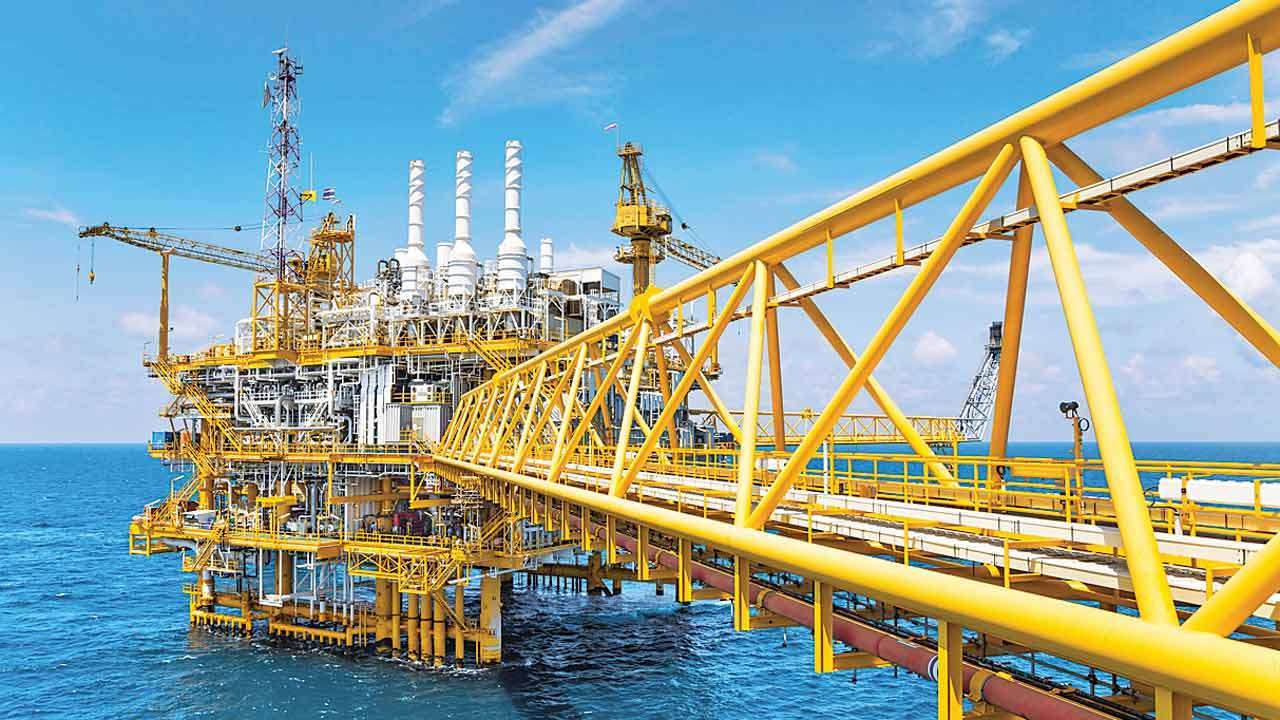
Oil and gas
The filter will also assist in cleaning the oil and gas in these industries before packaging.
FilSon is one of the companies that are responsible for the fabrication of hydraulic filter elements.
Our products are ideal for use in different applications such as filtration of oil to protect hydraulic motors and valves.
We use three types of filter media which include micro glass, paper oil filter, and stainless steel.
FilSon Filters are very efficient, with varying filter micron ratings and diverse rates of flow.
Hydraulic filter elements from FilSon have more pleats and a wider surface area for filtration.
Our products will guarantee consistent efficiency and protect your equipment at very low costs.
Conclusion
The information on the hydraulic filter elements is very informative and should get you going.
You are at a better position of adjusting your filtration needs using this information at a very low cost.
The ball is in your court, and you have the liberty of choosing how you will handle your filtration needs.
